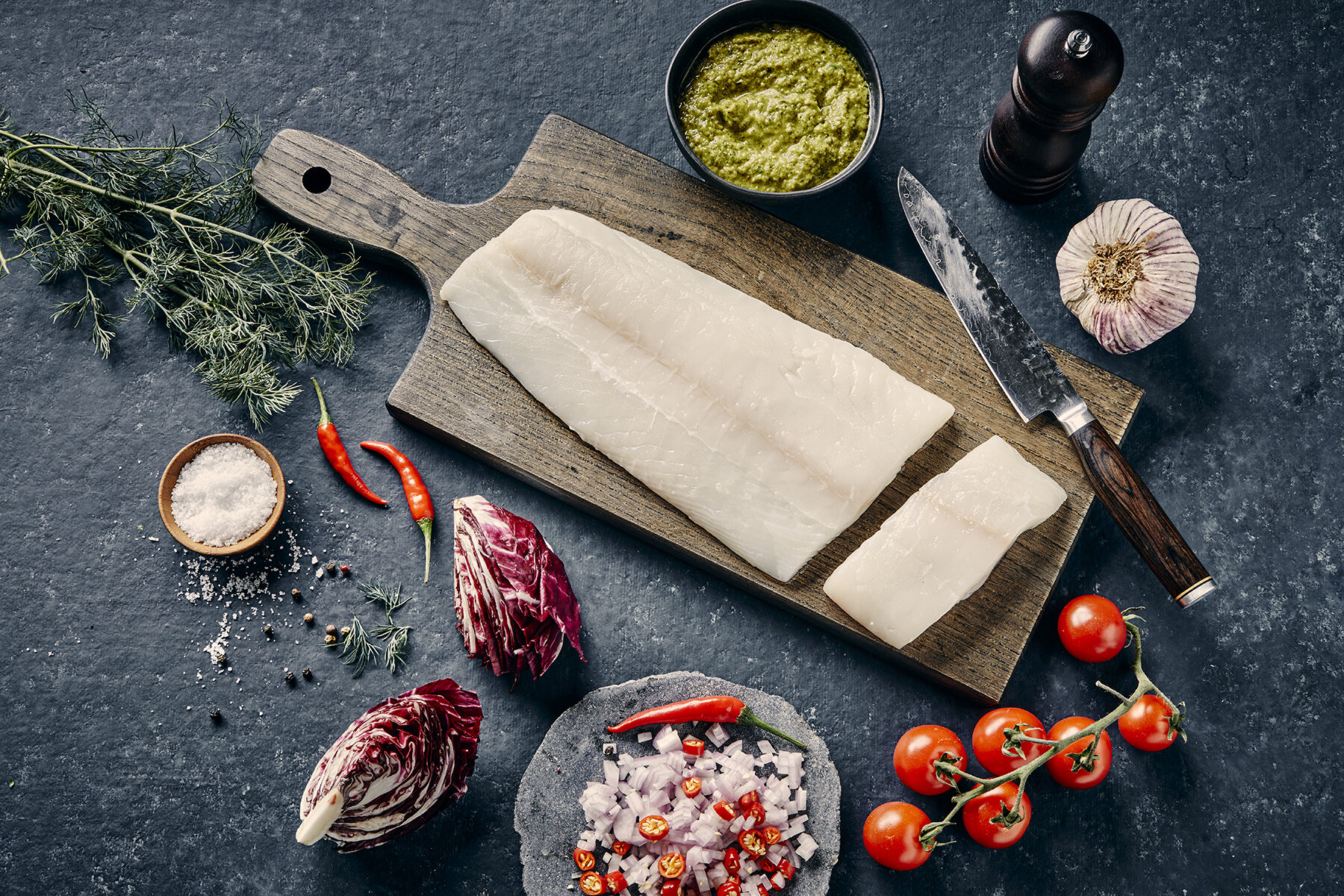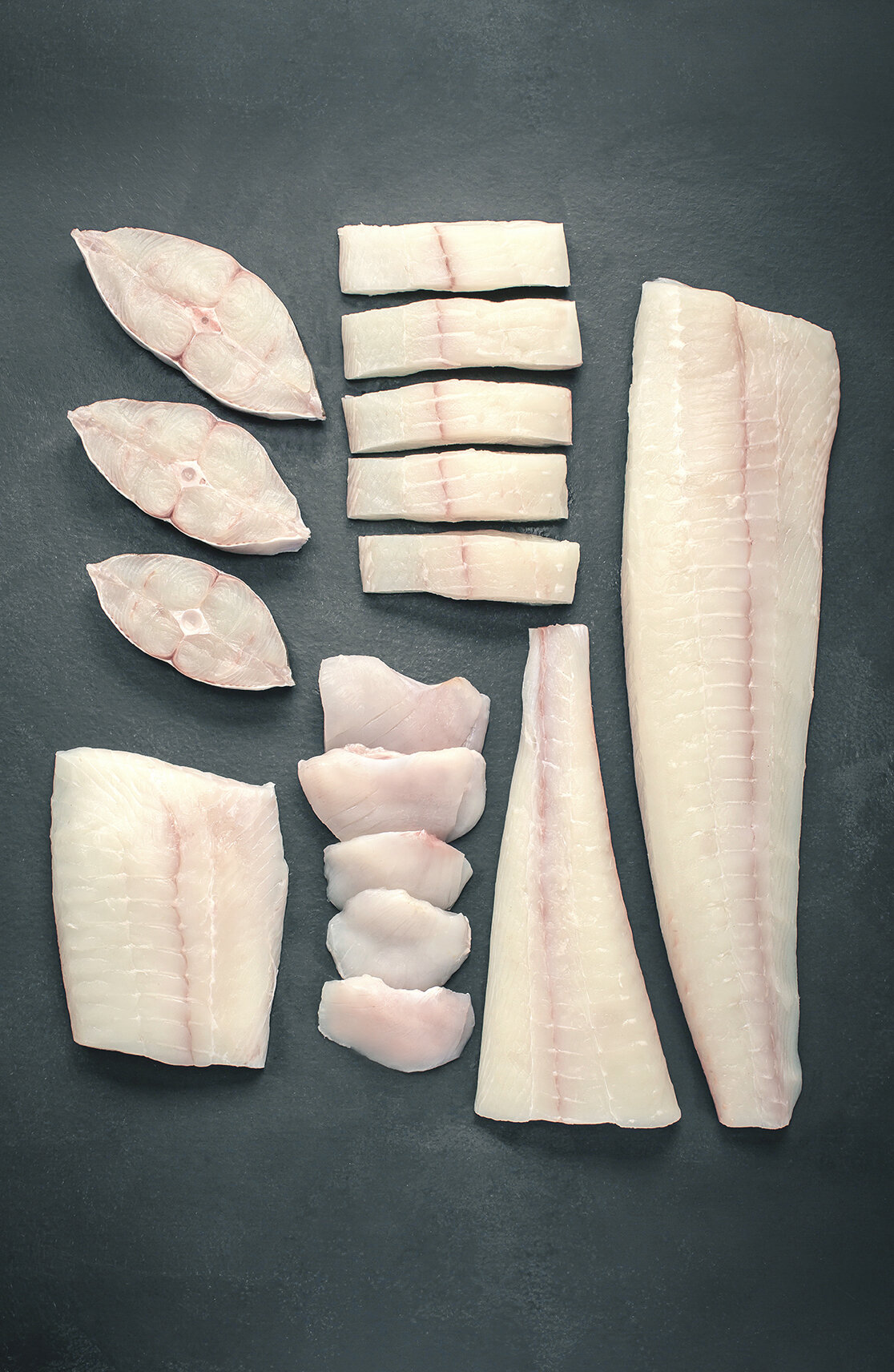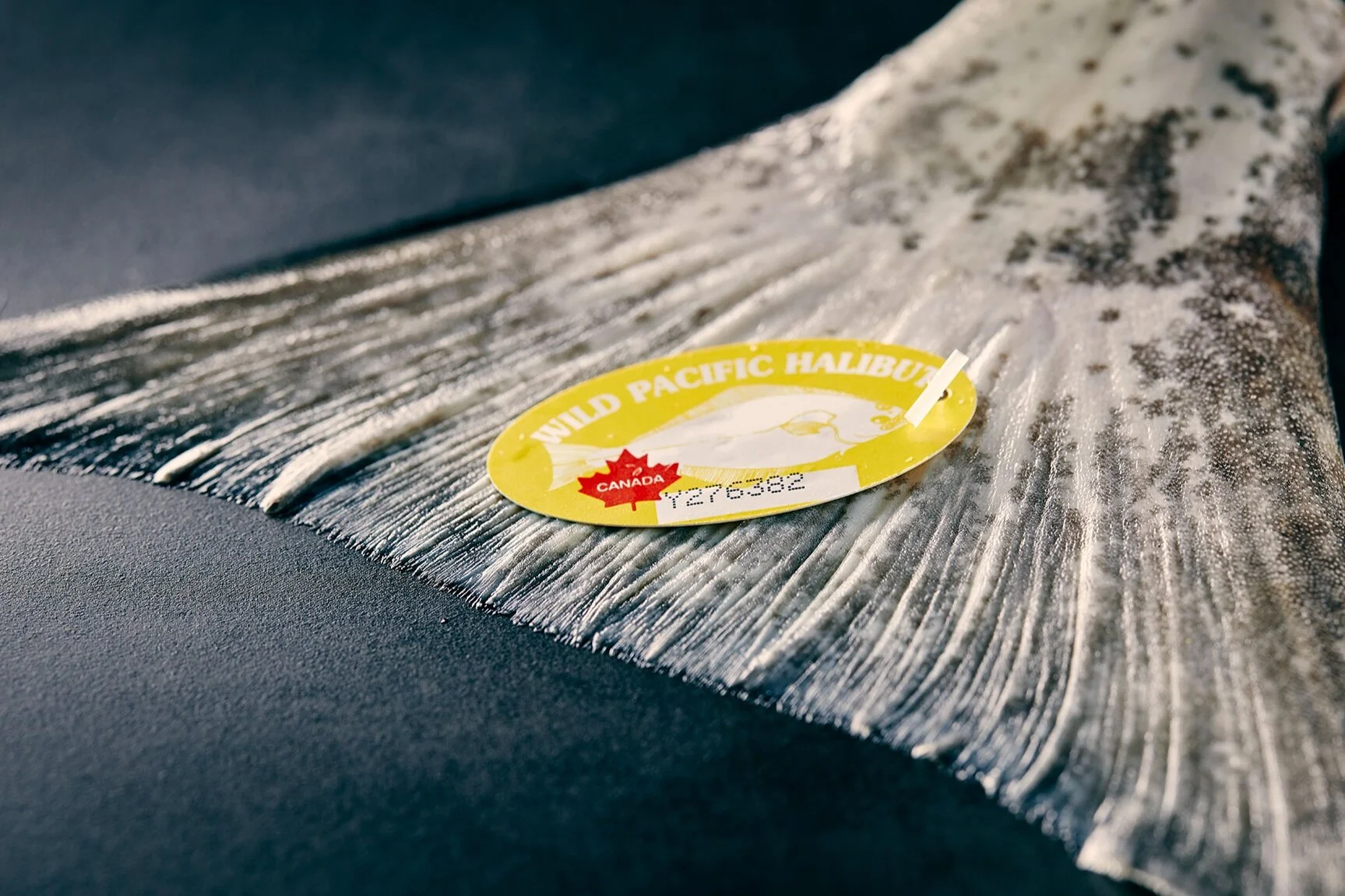BUYING & STORING
Wild Pacific halibut is harvested by Canada’s commercial fishing families devoted to providing top quality food. Their commitment together with strict monitoring measures ensures that wild Pacific halibut can be trusted as a safe and sustainable seafood choice.
This popular, traditional BC fish is available in a variety of product forms providing great versatility and endless opportunities in the kitchen. Plus virtually every part of the fish can be enjoyed which helps support tip-to-tail meal preparation and a zero-waste kitchen.
Flat out Facts & Tips
While fresh wild Pacific halibut is usually available between March and November, frozen halibut is available year round offering that locked-in delicious freshness.
BUYING TIPS
LOOK FOR FISH THAT:
• Is sold at respected retailer who supports sustainable seafood
• Is displayed on ice
• Smells clean and sea-fresh
• Has firm, moist and translucent flesh with a shiny white sheen that looks almost wet
• If buying frozen, look for same translucent appearance as fresh
AVOID FISH THAT:
• Sits in a puddle of liquid
• Smells “fishy”
• Has soft, gaping flesh
• Looks dull or has brown spots on the white flesh
• If buying frozen, has ice crystals or frost inside wrapping
• If buying frozen, has dried, cottony patches
• Looks “chalky”
“Chalky” halibut is a condition leaving the flesh looking opaquely white, dull and a little mushy. While the fish is technically not spoiled and the flavour and nutritive content are the same, the texture and moisture content are affected.
Storing Tips
• Buy fresh halibut the day you plan to eat it
• Remove fresh halibut from its store packaging, place into a tight-sealing container and refrigerate
• Store fresh halibut in the bottom or coldest part of your fridge
• Keep uncooked halibut for no longer than one to two days in the fridge
THAWING Tips
TO THAW SLOWLY:
Unwrap, place in pan, cover and leave in fridge for 24 hours.
TO THAW QUICKLY:
Place frozen fish into resealable plastic bag, and submerge in cold water. Use a small bowl to keep it submerged. The middle should be somewhat soft when thawed.
TO THAW MORE QUICKLY:
If it will be cooked immediately after thawing — microwave it on the “defrost” setting and stop the defrost cycle when the fish is still icy but pliable.
Some of Canada’s leading chefs and seafood experts have shared their tips for buying and storing wild Pacific halibut which is pretty Flat out Fantastic!









